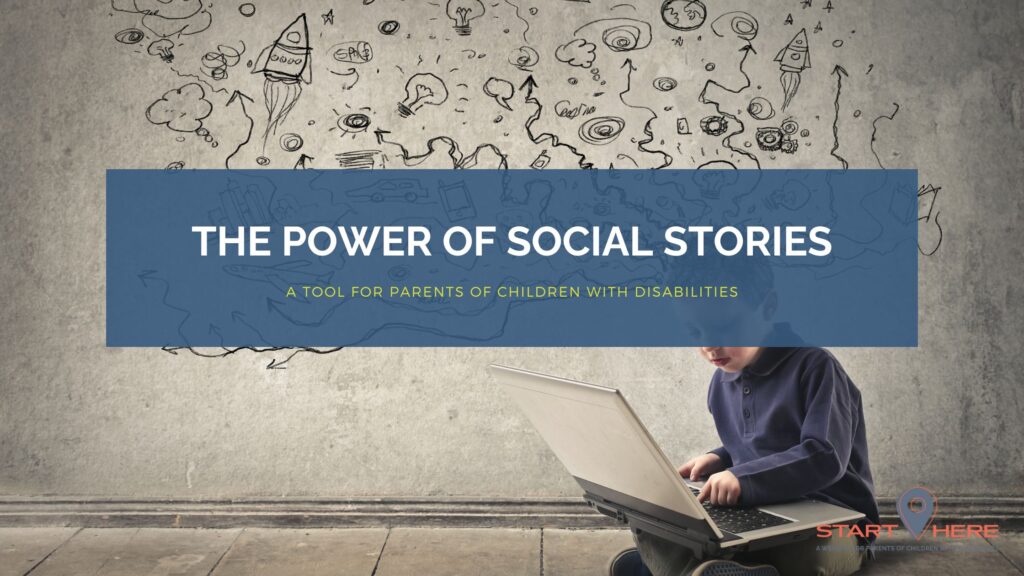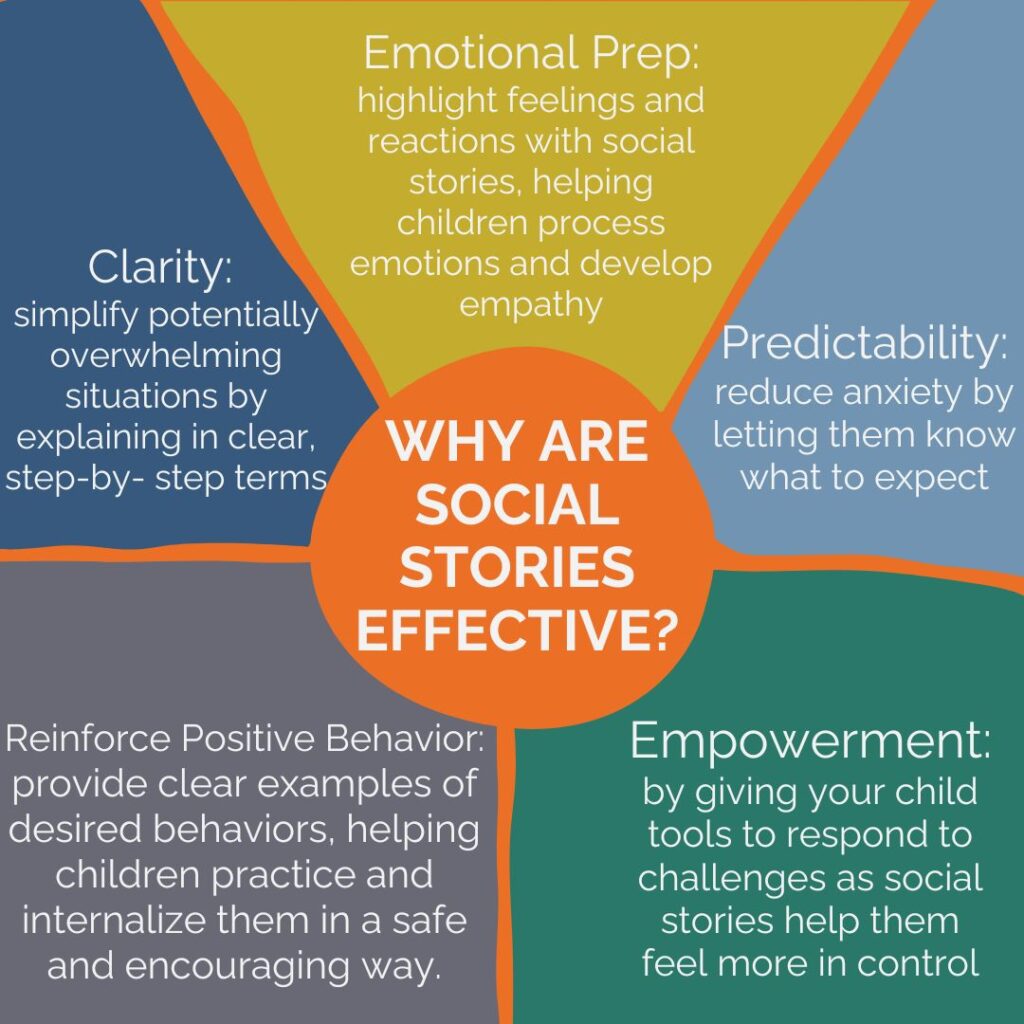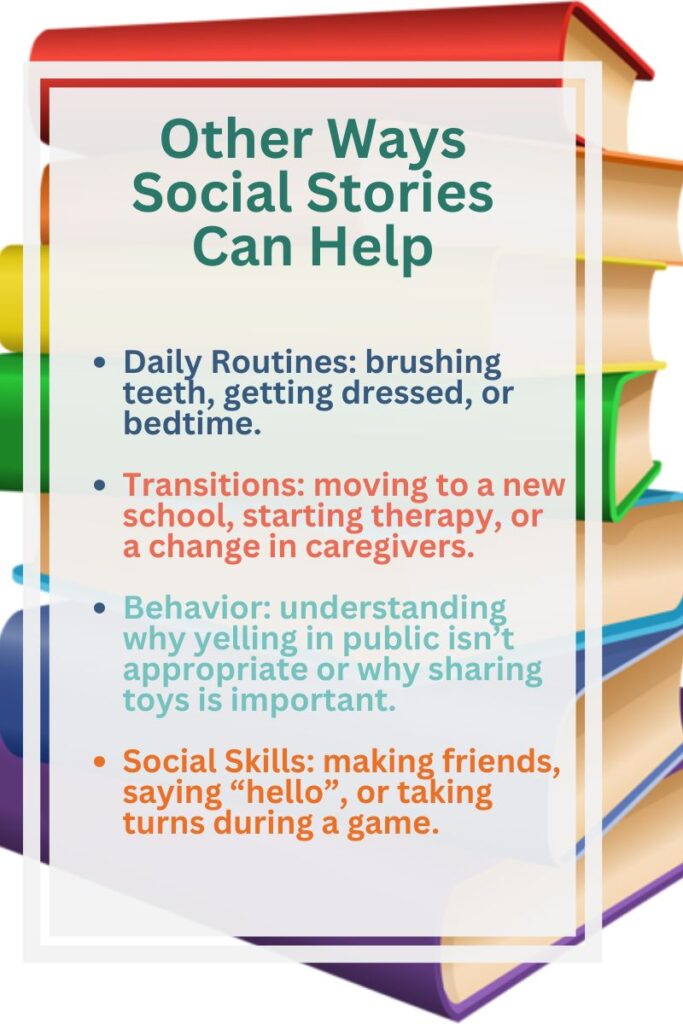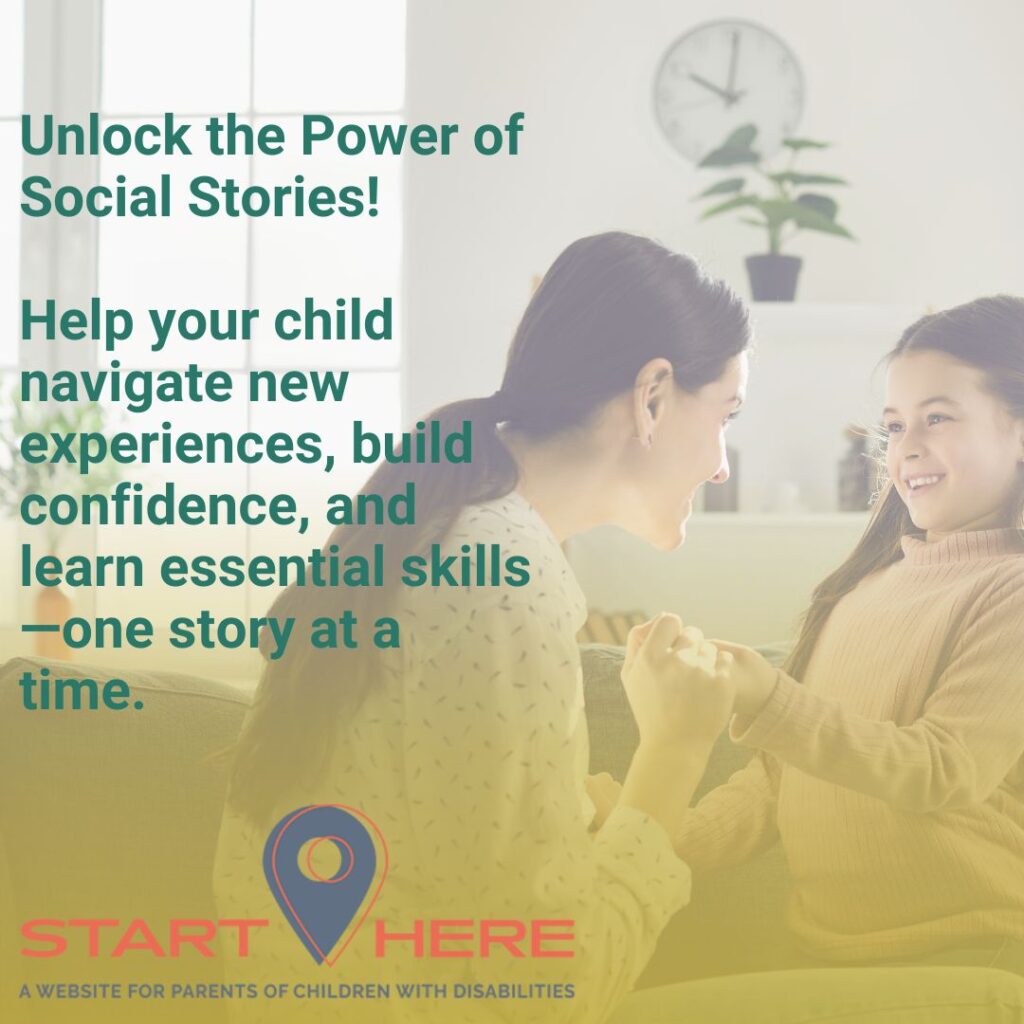
The Power of Social Stories: A Tool for Parents of Children with Disabilities
Parenting is a challenging journey full of unexpected hurdles and heartwarming victories. For parents of children with disabilities, these challenges can often feel magnified. It’s tough when you want to prepare your child for new experiences, teach them important life skills, or navigate stressful situations, only to find that their young mind struggles to understand or adapt. This is where social stories can become your secret weapon—a powerful tool to bridge the gap between your child’s unique needs and the world around them.
What Are Social Stories?
Social stories are simple, engaging narratives designed to help children understand social situations, navigate transitions, and learn new skills. Social stories use a combination of descriptive and directive sentences to explain a situation, outline expected behaviors, and prepare children for what to expect emotionally and physically. They are especially effective for children with disabilities, such as autism, ADHD, or sensory processing disorders, who might struggle with abstract concepts or unexpected changes.
Think of a social story as a personalized roadmap for your child. It breaks down complex situations into manageable pieces, offering your child a script for how to act, react, and feel in unfamiliar or challenging circumstances.
Why Are Social Stories So Effective?
Social stories work because they tap into how children learn—through repetition, visualization, and connection to their personal interests. For children with disabilities, they provide:

Example I: Preparing for the Train Museum Adventure
Let’s say your child loves trains and you’ve planned a visit to a train museum. However, the journey requires a subway ride—loud, crowded, and potentially overwhelming. Here’s how a social story could prepare your child:
Social Story: “Our Train Museum Adventure”
“We are going on an exciting trip to the train museum! There will be so many amazing trains to see. To get there, we will take the subway. The subway is a special kind of train that takes people from one place to another.”
“The subway might be loud. That’s okay! We can wear our noise-canceling headphones to make it quieter. There might be other people on the subway too. It’s okay to sit close to Mommy or Daddy and hold their hand. If you feel nervous, you can take deep breaths and look at your favorite train book.”
“When we get to the museum, there will be lots of trains to explore. You might feel excited or even a little tired after the ride, and that’s okay. We will take breaks and find a quiet spot if you need it. This is going to be such a fun adventure!”
This simple narrative not only prepares your child for the trip but also provides tools to manage emotions and unexpected situations, like feeling nervous on the subway.
Example II
Social Story: “Taking Care of My Teeth”
“Every morning and every night, I take care of my teeth to keep them healthy and strong. My teeth help me chew my food and smile big, happy smiles!”
“When it’s time to brush my teeth, I go to the sink and find my toothbrush. It is my special toothbrush (insert their color toothbrush to personalize), and I like the way it feels in my hand. I also need toothpaste, just a little bit—about the size of a tiny pea.”
“First, I wet my toothbrush with a little water. Then I put the toothpaste on the bristles. Now I’m ready to start brushing!”
“I brush my teeth gently, moving the brush in little circles. I brush the top teeth, the bottom teeth, the teeth in the front, and the teeth way in the back. I make sure to brush every side of each tooth—on the outside, the inside, and where I chew. This helps get rid of germs and keeps my teeth shiny and clean.”
“While I brush, I might feel the bristles tickle my gums. That’s okay! If it feels funny, I can stop for a moment and take a deep breath. Brushing my teeth is important, and I can do it!”
“I brush for two minutes. I can use a timer, a song, or even count to 60 two times to make sure I brush long enough.”
“When I’m done brushing, I spit the toothpaste out into the sink and rinse my mouth with water. Then I rinse my toothbrush and put it back where it belongs. My teeth feel fresh and clean, and I am proud of myself for taking care of them!”
“Brushing my teeth every day helps keep me healthy, and it makes my smile look great too. Taking care of my teeth is something I can do all by myself or with a little help if I need it.”
This story highlights the steps of brushing, sensory experiences (like the tickling bristles), and the emotional payoff of being proud of oneself for completing the task. It breaks down a potentially overwhelming routine into manageable and positive steps.
Other Ways Social Stories Can Help
As you can see in the second example, social stories aren’t just for outings—they’re a versatile tool for teaching nearly any skill or preparing for any change, such as:

How to Create a Social Story
Creating an effective social story involves a mix of creativity, empathy, and simplicity. Here’s how to get started:
- Identify the Goal: What skill or situation are you preparing your child for?
- Keep It Child-Centered: Use words and visuals that resonate with your child’s interests and communication style.
- Describe, Don’t Prescribe: Focus on explaining the “what” and “why” rather than simply telling your child what to do.
- Highlight Emotions: Include feelings and reactions, such as “You might feel happy when you see the trains!”
- Use Visual Aids: Create stories with pictures, drawings, or even videos. Tools like apps or simple photo collages can bring your story to life. Include specifics that relate to your child- colors, shapes, toys, etc.
- Practice and Repeat: Read or watch the story with your child multiple times before the event or transition.
Formats for Social Stories
- Verbal Stories: Simple storytelling during one-on-one time.
- Picture Books: Use printed or hand-drawn pictures alongside short sentences.
- Videos: Record a visual walkthrough of the event or use animations.
- Interactive Apps: Apps like “Social Stories Creator” allow you to design personalized stories with multimedia elements.
Tips for Success
- Personalize the Story: Use your child’s name and favorite interests to make the story relatable.
- Involve Your Child: Let them add details or draw pictures to feel more connected to the story.
- Reinforce Positivity: Focus on what your child can do and celebrate their efforts.
- Role-Play: Practice the story in real life to reinforce the lessons.
Final Thoughts
Parenting a child with disabilities comes with unique challenges, but tools like social stories can make a world of difference. By turning complex situations into manageable, relatable narratives, you can help your child navigate the world with confidence and joy. Whether it’s preparing for an exciting trip to the train museum or mastering a daily routine, social stories offer a path forward, one step at a time.
You’ve got this—and so does your child!

